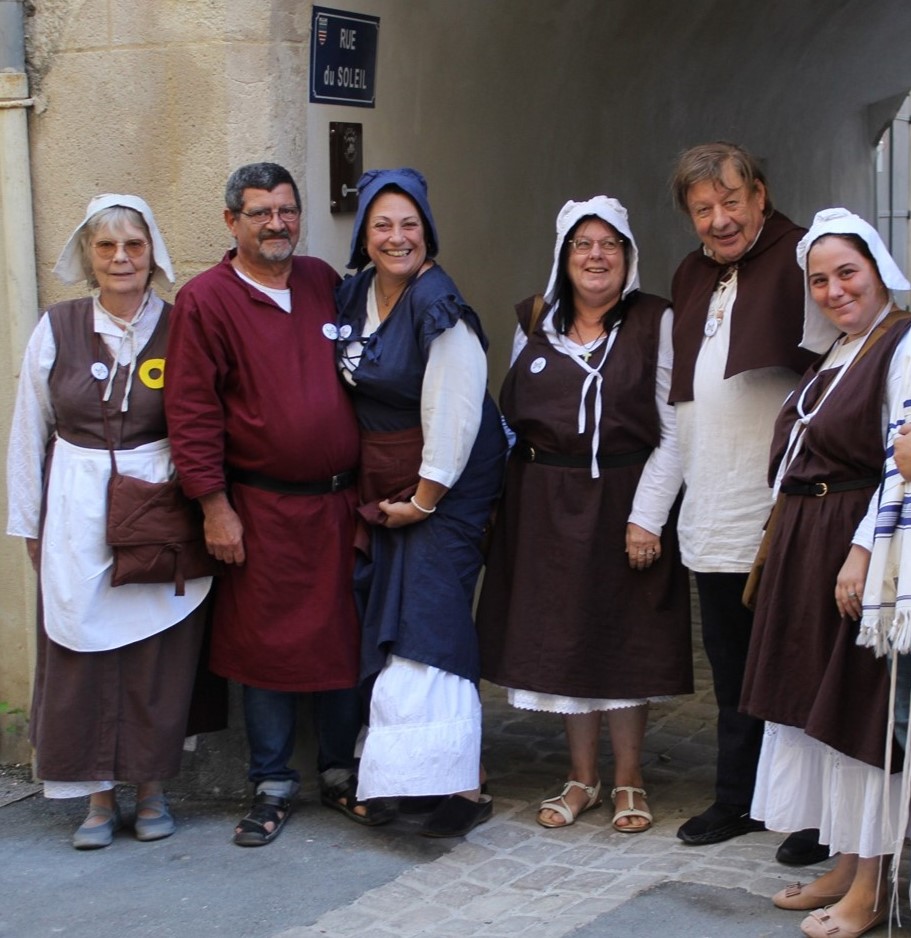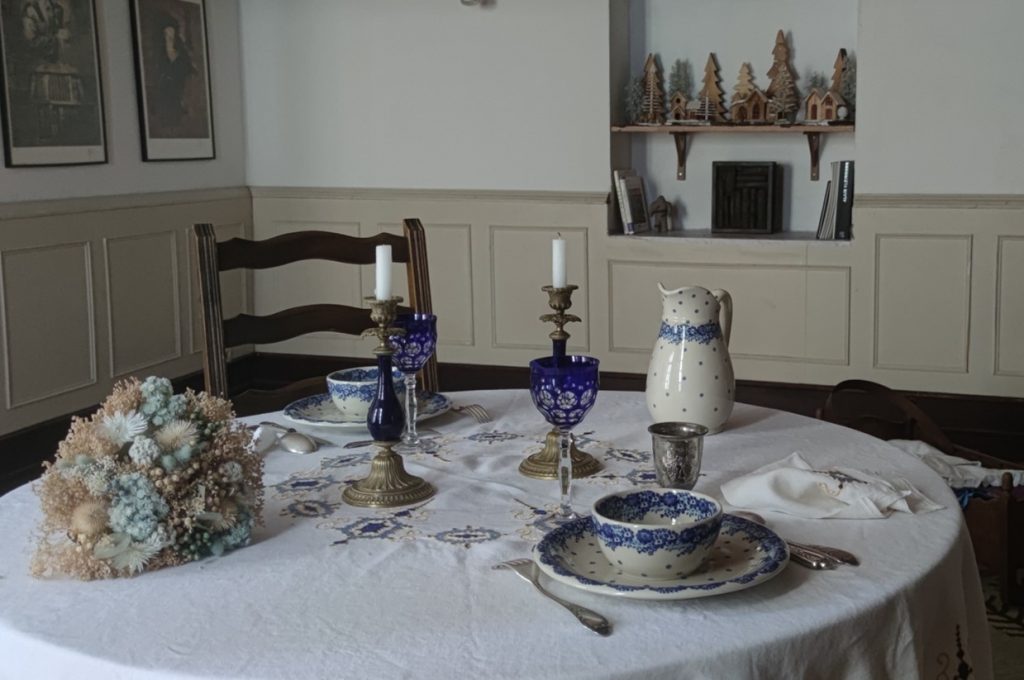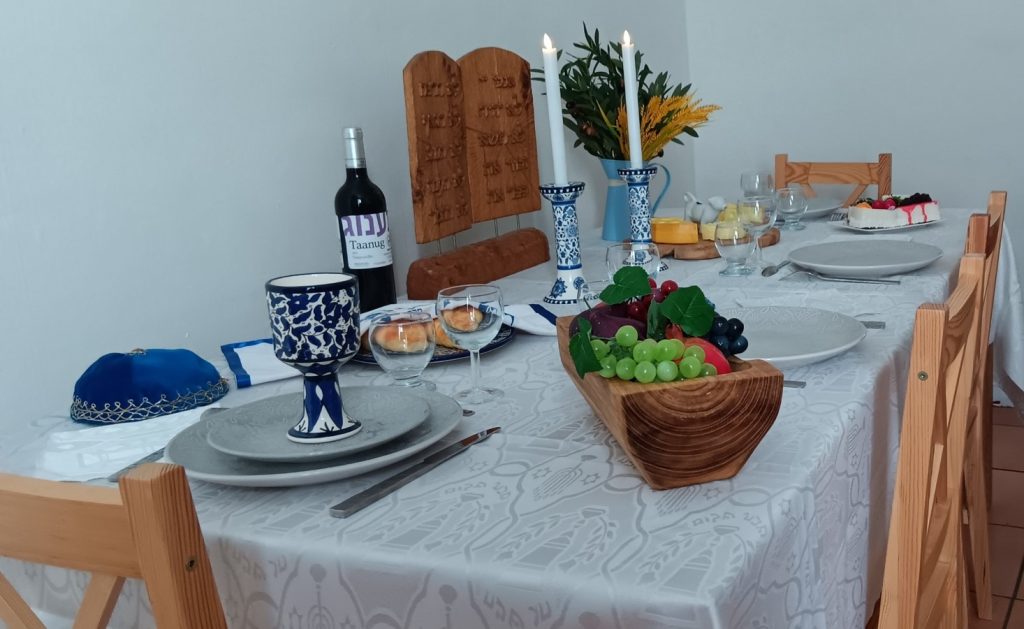This year, the Association Mémoire Juive Béziers is presenting an astonishing journey through Béziers’ long and fascinating Jewish history. Here we meet its director, Chantal Viotte-Rabinovitch, who tells us all about the project and the new presentation room for this cultural heritage.

Jguideeurope: What events will you be organising during the Heritage Days?
Chantal Viotte-Rabinovitch: As we have done every year since 2019, we will be taking part in the Heritage Days, which in 2024 will take place on 21 and 22 September. This choice was motivated by our desire to be present and to be part of the events organised by the city of Béziers.
The principle is semi-guided tours in period costume. We are divided into 3 groups to welcome our visitors to the heart of the remains of the old Jewish quarters. They are first welcomed at the Hôtel de Cassagne, home to the synagogue and the Mémoire Juive de Béziers association, where they are given a map. This allows them to move freely from 10am to 6pm non-stop, without prior registration, from one point to another. We tell them the story of the Jewish community in Béziers, from its golden age under the Trencavel dynasty to the expulsion of 1306, via the dreaded Albigensian crusade, in the very places where this history unfolded.
On Friday 20 September, as part of the Heritage Days, we are offering guided tours for schoolchildren and their teachers on the theme of Heritage and Tolerance. The aim is to help children understand the evils of intolerance and the virtues of tolerance, through the history of the Jews of Béziers, written in stone, using the remains as a teaching aid for the historical narrative. Teachers must register their classes to take part.

You have recently started organising dramatised tours of Béziers. Can you tell us a bit more about them?
Since 2019 we have been organising guided tours of the remains of the old Jewish quarters of Béziers. In the heart of the historic city lies a little-known heritage. Just take a look at the name plaque on rue de la Petite Jérusalem (formerly rue de la Juiverie). What role did the Jews play in medieval Béziers? What traces have they left behind? How did the Jews live in the town? We tell this fascinating story, which has left mysterious traces all the way to Saint Nazaire cathedral.
This year we wanted to innovate with dramatised tours. I can’t reveal all the ‘surprises’ along the way, but I can tell you that during these tours you’ll be able to rub shoulders with the ‘ghosts’ of the Jews of Béziers’ past, who will appear in period costume as you stroll through the narrow streets. The tone is humorous and facetious, even if the ‘background’ is as enriching and educational as ever.

The association has taken over the premises, which are to be converted into a museum. How did this initiative come about? Can you tell us about some of the objects that will be on display?
The Hôtel de Cassagne houses the synagogue, the reception room and the kosher kitchen, as well as the museum. One of the rooms in the educational area opened onto our rabbi’s flat. Since he decided to move to the city with his small family, which has since grown, we were able to ‘reclaim’ a surface area of around 90m2 to build an extension to the museum. But instead of wiping the slate clean, we wanted to retain the spirit of the rabbi’s house.
This is particularly true of the old dining room, which we have just refurbished and redecorated a little. The heart of the dining room, in which various religious objects are also on display, is a table set up for permanent immersion in the world of Judaism and the Jewish festivals. The décor changes according to the cycle of festivals. Between two festivals, it’s the Shabbat table that’s set, with the candlesticks and the blue Armenian ceramic kiddush glass, the embroidered tablecloth from Israel, and even the tray with the hallots. The nicest compliment we received was: ‘It makes you want to sit down and sit at the table!’ That’s exactly the effect we’re aiming for, even if the appetising food presented is, of course, fake.
The other rooms are also an invitation to travel, in time and space, with, for example, the room devoted to the Jews of North Africa. Another room is dedicated to the Jews of Eastern Europe, their life, their culture… and their destruction. Designed as a true immersion into the world of Yiddishland, it presents both the bright side with paintings by Alex Levin that evoke the world of the shtetl before: peace, family, peaceful life in the light of the Torah…

And the sudden irruption of the dark side with lithographs by Alain Kleinmann evoking the Shoah. Mirrored are family photos from the happy years, and photos of faces and glances in the Warsaw ghetto. The heart of the space is a recreation of a living room, with its fireplace, knick-knacks, paintings by twentieth-century Polish artists, an empty armchair and cradle… because all life has stopped. A Shabbat table is laid, with a tablecloth and napkins hand-embroidered in Eastern Europe, antique candlesticks and a Boleslawiec Polish ceramic service. The only thing missing is the family who were about to sit down to recite the blessings, but who have disappeared, swept away by the brown wave as the house sank into silence and oblivion, following the tumult of pounding boots, weeping and screaming. Nostalgic, moving, poignant… yes, but with the choice never to show the unspeakable, which remains suggested so that the spoken word can take over to tell the story.
So this museum is not a cold, impersonal place where you come to look at religious objects displayed in glass cases, but a real immersion in the Jewish world with guides who, for 1? hours, tell the story of this world with passion.